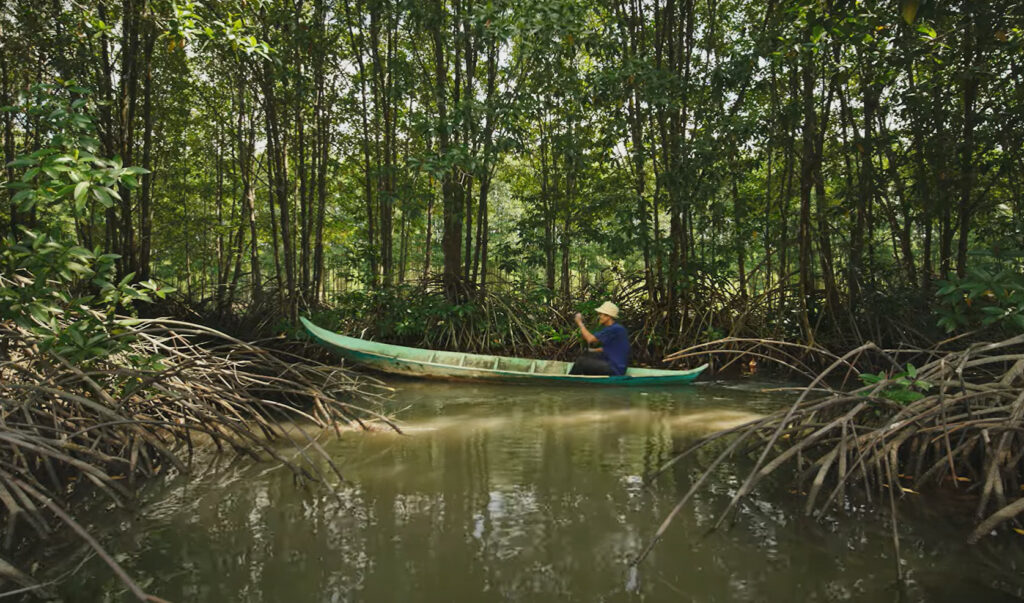GSA Releases Wi-Fi Access for Fishing Crew at Sea Report
Global Seafood Alliance (GSA) has released a report exploring best practice in relation to provision of Wi-Fi for fishing crew at sea that includes recommendations for action.
In this fast-moving era of connectivity technology, there is broad agreement from vessel owners, the private sector and trade unions that crew at sea in excess of 24 hours should have access to Wi-Fi, free of cost, to make personal calls and exchange messages.
The report, titled “Exploring current best practice for provision of Wi-Fi to crew on fishing vessels at sea,” includes firsthand input on private sector and NGO initiatives from Thai Union, Human Rights at Sea, Integrated Monitoring and Geeks Without Frontiers (GWF). GWF is a global non-profit organization that researched the benefits and opportunities for connectivity at sea in Thai and Fijian fisheries. GWF’s recommendations for “cost-effective voice and data services that can be bundled and scaled” provide opportunity for action at collective and regional levels.
“Connectivity onboard vessels for all members of crew, domestic or foreign, is a key component of crew welfare and wellbeing. The ability to contact family members as and when they wish, goes a significant way to lessen the frustration of being away from loved ones. It also provides the facility to raise a real-time grievance should that be required,” said Mike Park, CEO of the Scottish White fish Producers Association, which operates a crew services company.
The report follows an action research project undertaken through 2022 called “What is the Expectation of Worker Voice and Grievance Mechanisms on Certified Vessels?” One of its recommendations was to better understand connectivity at sea for fishing crew, which was identified as critical to being able to access grievance mechanism or worker voice mechanisms. In 2022, the call for Wi-Fi access for crew at sea was amplified by the “Wi-Fi Now For Fishers’ Rights” campaign and associated reports.
The research found many examples of Wi-Fi on fishing vessels, all free of cost, but with varying management in terms of access. This management may be in relation to data usage or prohibitive use of personal devices when crew are actively engaged in vessel operations. It was noted that provision of Wi-Fi may help both retain and recruit crew where applicable and can be used to ensure access to digital training, contracts, payroll and other services at sea. Seventy percent of crew responding to a questionnaire on connectivity at sea said they would not work on a vessel without Wi-Fi access.
“It is time to make reliable, connectivity available to support all those at sea on fishing vessels,” commented David Hartshorn, CEO of Geeks Without Frontiers. “It is increasingly accessible and affordable. Working together to create efficiencies and operational advantages is the next step.”
The ILOc188 Work in Fishing Convention (2007) requires that “All fishers on board shall be given reasonable access to communication facilities,” which is open to interpretation. In the 17 years since this guidance was issued, mobile phone ownership has doubled to account for an estimated 82 percent of the global population. Two third-party audited standards interpret the ILOc188 guidance into a Wi-Fi requirement; the Responsible Fishing Vessel Standard and the FISH crew standard.
“Some vessels have Wi-Fi but is only limited to the captain and chief engineer. I insinuate that Wi-Fi must be mandatory to all fishing vessels. The motive behind this is that we need to contact our families and pay our accounts plus sending money to our relatives when the need arises.” – Comments from crew
Reliability of connection at sea varied, particularly in more remote areas, but is thought to be improving with satellite connections becoming more mainstream and affordable.
Operational advantages were noted and potential for transmitting near real-time data may provide opportunity for more adaptive and responsive fisheries management. Additionally, connection that allows transmission of data at sea may benefit compliance, audits, and create other efficiencies.
Fishers can stay in touch with friends and family and labor issues can be addressed through access to grievance procedures, contracts and payment records. Crew at sea can access online training and other digital applications.
Vessel owners’ connectivity with their vessels can speed up operations and increase efficiency. Data can be provided in real-time or near real-time that can enable agile and adaptive management and decision making. Retention and recruitment may be improved.
Retailers and consumers benefit from greater assurance of good crew wellbeing as well as the potential for enhanced traceability.
Lastly, governments and regulators can use digital connectivity to support compliance monitoring and near live time data transmission can enable adaptive management decisions over time.
The Global Seafood Alliance invites you to respond to the report by completing this questionnaire by May 6, 2024. It is intended to update the report accordingly with relevant information as provided. GSA research explores best practice and what is currently achievable. This approach provides a marker for companies to work toward and learn from, what can be expected and a starting point to discuss if and how improvement can be made.
For more information, contact GSA Director of Strategic Engagements Melanie Siggs here.
About Global Seafood Alliance
The Global Seafood Alliance is an international, nonprofit trade association dedicated to advancing responsible seafood practices through education, advocacy and third-party assurances. Through the development of its certification programs, GSA has become the leading provider of assurances for wild and farmed seafood globally. The organization’s work addresses the full spectrum of responsibility, from environmental responsibility and social accountability to food safety. Established in 1997 as the Global Aquaculture Alliance, GSA is headquartered in Portsmouth, N.H., USA. To learn more, visit www.globalseafood.org.




